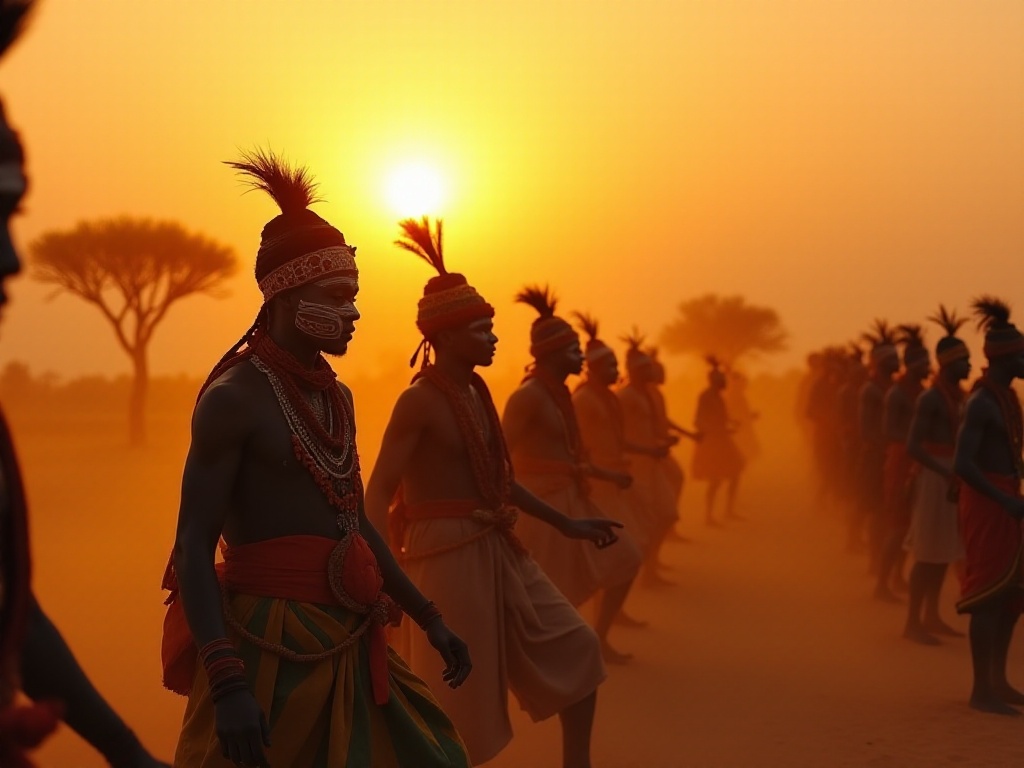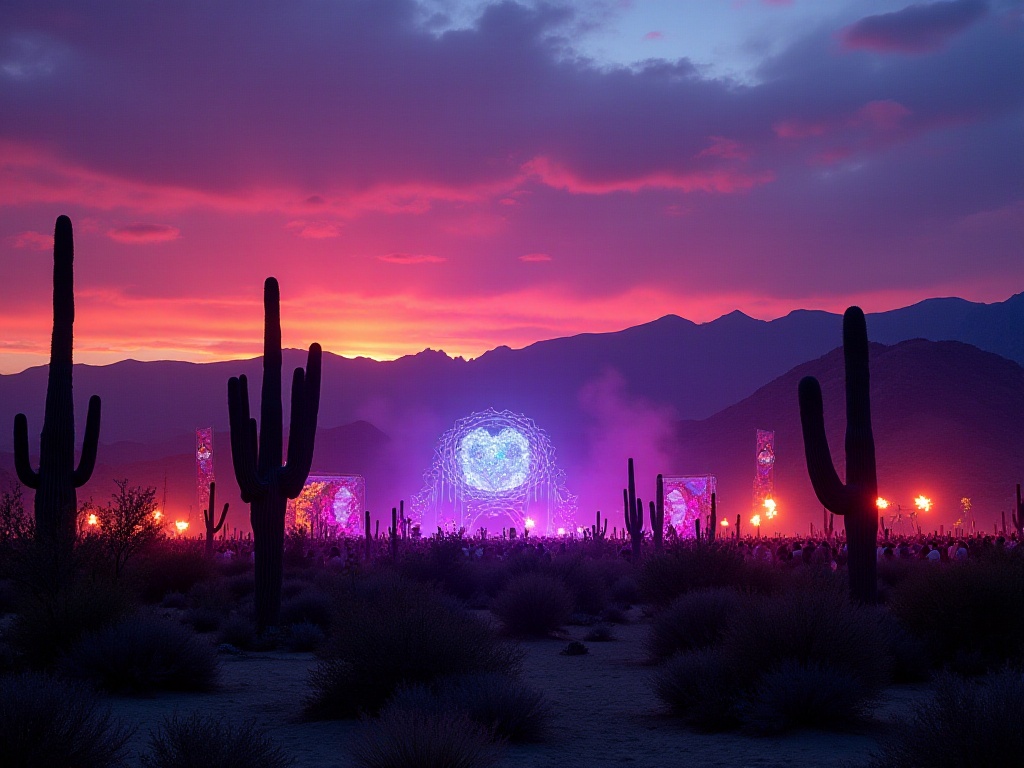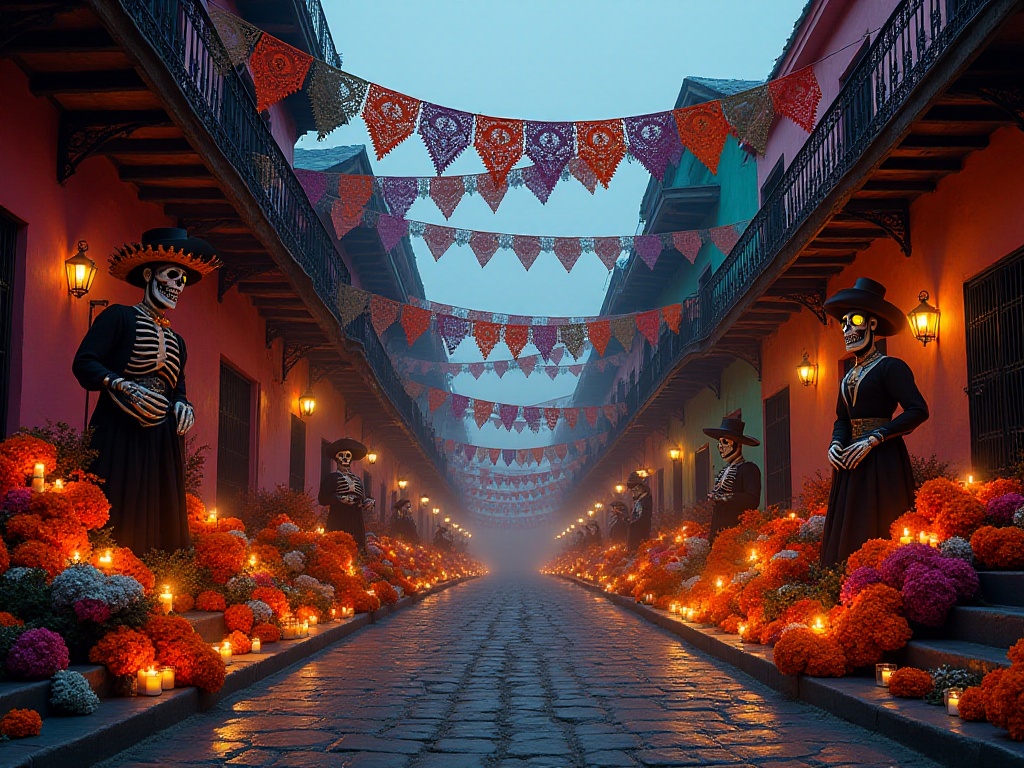Origins of the Festival
The Day of the Dead, as Mexico's most important traditional festival, attracts hundreds of thousands of tourists globally each year. This festival is not merely a simple celebration but a cultural feast that combines Aztec ceremonial traditions with Catholic culture. The Aztecs believed that death was not the end but the beginning of a journey to another world. In their tradition, they held grand ceremonial activities annually to commemorate departed loved ones.
After Catholicism was introduced to Mexico, this ancient ceremonial tradition did not disappear but merged with Catholic All Saints' Day culture, gradually evolving into the Day of the Dead we see today. This cultural fusion gave the Day of the Dead its unique charm, preserving both the indigenous reverence for death and incorporating Catholic beliefs about the soul's immortality.
In Mexican traditional beliefs, death is not a fearful topic. Instead, they view death as a natural continuation of life, a necessary path to another world. This unique cultural concept is fully expressed in the Day of the Dead celebrations. People commemorate their departed loved ones joyfully, believing that on these special days, the souls of the deceased return to reunite with their families.
Time Schedule
The Day of the Dead celebration is a grand three-day festival. Starting from October 31st, all of Mexico becomes immersed in the festival atmosphere. On this day, people begin preparing for the upcoming festival, cleaning houses, setting up altars, and preparing offerings. The streets are filled with people busy purchasing flowers, food, and decorations.
November 1st is known as "Day of the Angels," dedicated to commemorating children who died young. In Mexican belief, these children who died early are God's little angels, their souls pure and unblemished. Parents who have lost children place toys, candy, and small clothes on the altar, hoping their children will return for a visit. Some families also place their children's favorite snacks and drinks.
November 2nd is the "Main Day," primarily dedicated to commemorating adult deceased. People place items their departed loved ones enjoyed on the altar, such as their favorite drinks, cigarettes, and foods. Many families also place photographs of the deceased on the altar, light candles, and burn incense, hoping to guide the souls of the departed back home.
During these three days, all of Mexico is immersed in a special atmosphere. During the day, people are busy preparing offerings and decorating altars; at night, various celebrations take place. The streets are filled with laughter and joy as people sing and dance, welcoming the return of their departed loved ones in the most enthusiastic way.
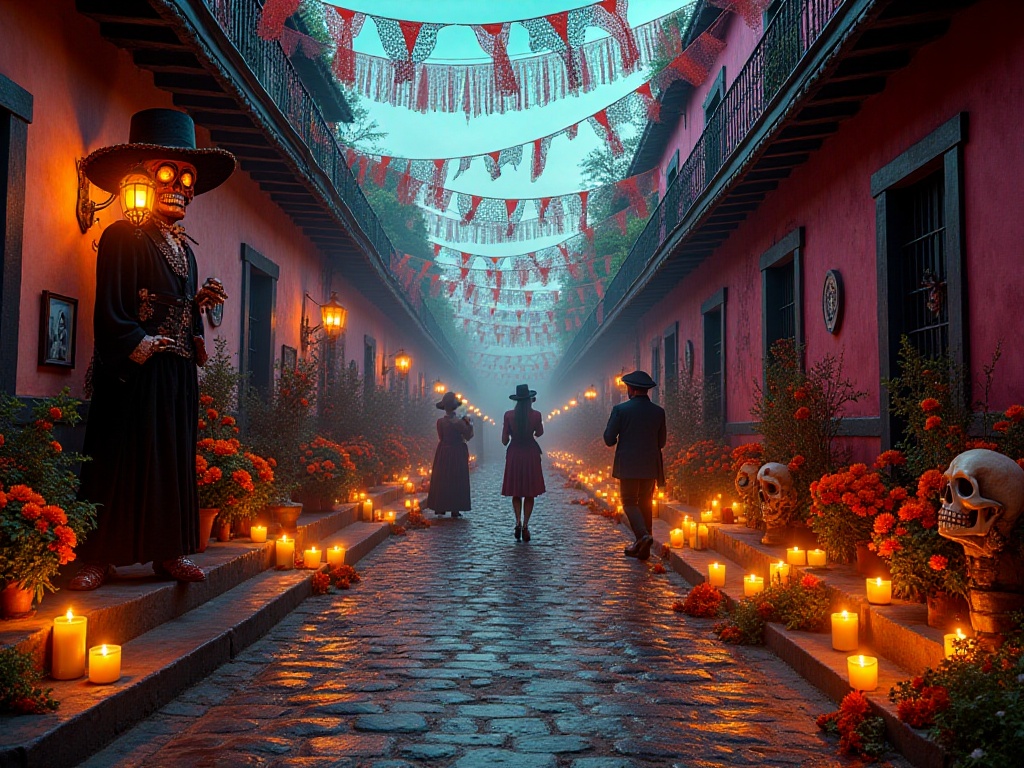
Celebration Methods
The celebration methods of the Day of the Dead are rich and diverse, full of distinctive Mexican characteristics. First and most importantly is the decoration of altars. Each family carefully prepares a multi-tiered altar, which is not only a place of worship but also a work of art. The altar is usually divided into several levels, each with its special meaning and items.
The top level typically holds photographs of the deceased, forming the core of the entire altar. Candles are placed around the photos, said to guide the souls of the departed back home. The second level generally holds various foods and drinks, including the deceased's favorite foods. The third level holds items used by the deceased during their lifetime, such as clothing, pipes, or musical instruments. The bottom level usually holds symbolic items, such as crosses, religious icons, and other religious symbols.
The altar I saw last year in an ordinary family home in Mexico City left a deep impression on me. It was set up by an elderly grandmother for her deceased husband. The altar not only had photos of her husband when he was young but also their wedding photo. Next to the photos was a bottle of his favorite tequila and a pack of his regular cigars. The grandmother had also specially prepared his favorite tacos. Watching her carefully arrange each item, one could feel her deep longing for her husband.
Besides family altars, street decorations are also an important part of the Day of the Dead. The entire city becomes golden with marigolds. Marigolds are not only beautiful but in Mexican traditional culture are believed to guide the souls back home. Streets are hung with colorful paper flowers and paper cuts, and shop windows are filled with various skull decorations. These skulls are not frightening but artistic, some wearing elegant hats, others wearing beautiful dresses, demonstrating Mexicans' unique understanding of death.
The nighttime celebrations are even more lively. In city squares, grand parades are held. Participants wear skull makeup and elaborate costumes, singing and dancing to music. Some people dress up as the famous skeleton lady "Catrina," an iconic figure created by Mexican artist José Guadalupe Posada, symbolizing the mockery and transcendence of death.
In cemeteries, the atmosphere is more solemn. Family members bring food and flowers to their loved ones' graves, clean the tombstones, and place flowers and offerings. Some people stay overnight by the graves, lighting candles and telling stories about the deceased. While these scenes might seem sad, they are actually full of warmth and hope, as people believe that on this special night, they can reunite with their departed loved ones.
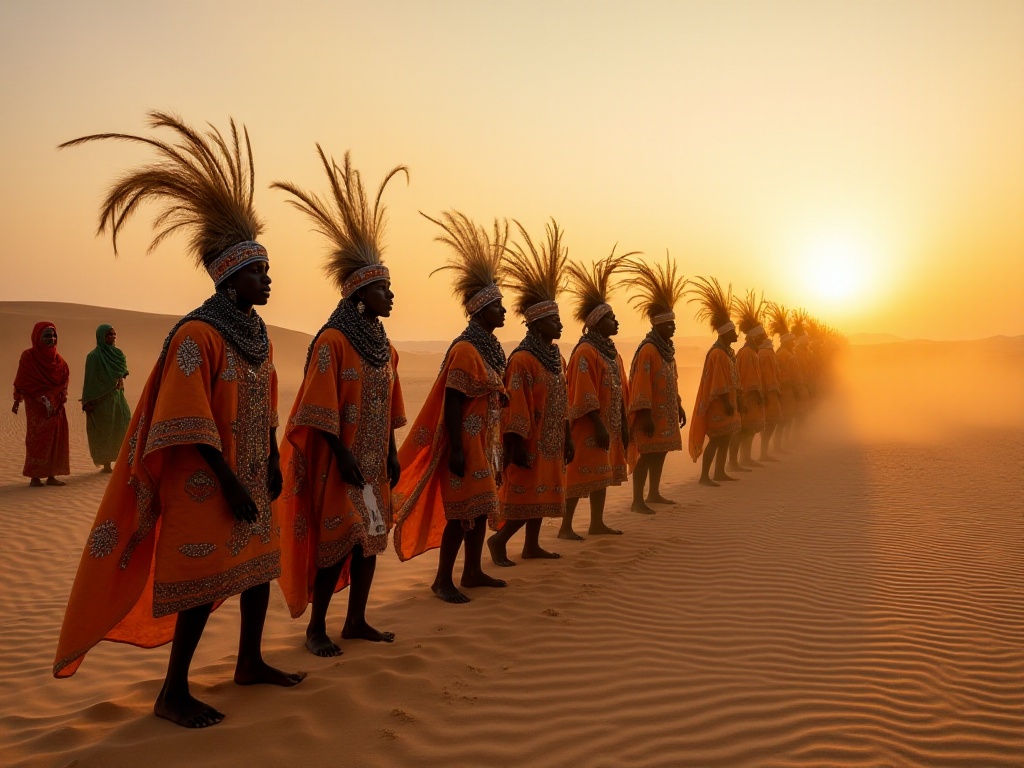
Special Foods
The food of the Day of the Dead is an essential part of this festival. Each special dish carries unique cultural meanings, showing Mexicans' distinctive understanding of life and death. The most representative is the Pan de Muerto (Bread of the Dead). This bread has a unique shape, round with decorations symbolizing bones on top, sprinkled with white sugar, looking both artistic and festive.
Making Pan de Muerto is an art. Bakers carefully mix quality flour, eggs, butter, and sugar to make the dough, adding orange blossom water or vanilla for flavoring. The fermented dough is shaped into a round form with bone-shaped decorations on top. After baking, it's sprinkled with white sugar or sesame seeds while hot, and some places add sugar syrup. Taking a bite of warm Pan de Muerto, with its crispy crust and soft interior, carrying a subtle spice flavor, is an unforgettable experience.
Besides Pan de Muerto, sugar skulls (Calaveras de Azúcar) are also essential Day of the Dead foods. These sugar skulls are not just food but exquisite works of art. Craftsmen use colored icing to draw complex patterns on white sugar skulls, some with names or short messages. These sugar skulls are not only edible but more often used as decorations on altars.
Hot chocolate is another important beverage of the Day of the Dead. Mexican hot chocolate is different from what we usually drink, as they add spices like cinnamon and vanilla, and in some places even chili, creating rich layers of flavor. On cold nights, a steaming cup of Mexican hot chocolate warms not only the body but also the soul.
Tamales are also common during the festival. These are made with corn dough wrapped around various fillings, steamed in corn husks. Fillings can be meat, beans, or cheese, with each region having its own special recipe. During the Day of the Dead, people prepare large quantities of tamales, both for their own enjoyment and as offerings on the altar.
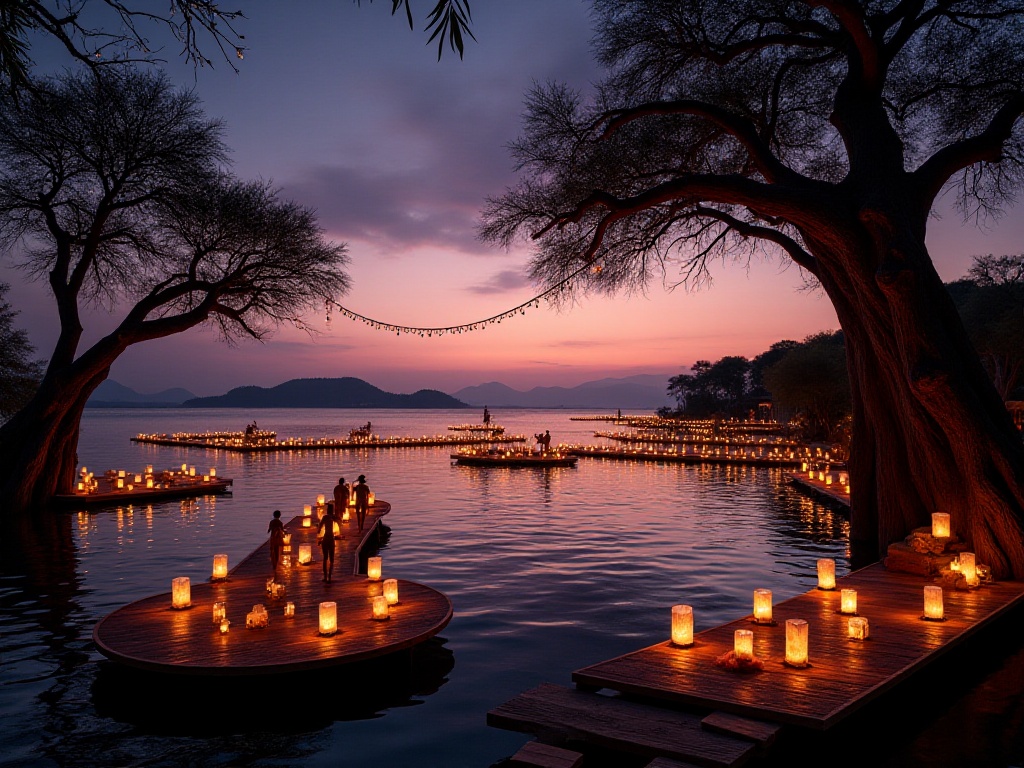
Cultural Significance
The cultural significance of the Day of the Dead runs deep; it's not just a festival but a concentrated expression of Mexicans' attitude toward life and death. During this festival, death is not a fearful topic but is viewed as a natural process in life's cycle. Mexicans believe that death is not the end but another form of existence.
This attitude toward death is fully expressed in various Day of the Dead activities. People celebrate with flowers, music, and dance, commemorating the deceased in joyful ways. While this celebration method might seem contradictory, it actually reflects Mexicans' profound understanding of life. They believe that since death is inevitable, we should face it calmly and view it with a positive attitude.
The Day of the Dead also reflects Mexicans' strong family values and respect for tradition. During this festival, family members gather together to set up altars, prepare food, and tell stories about the deceased. These activities not only strengthen connections between family members but also help younger generations understand and inherit traditional culture.
From an artistic perspective, the Day of the Dead has created a unique aesthetic style. Whether it's the colorful skull decorations or the elaborate altar arrangements, they all showcase Mexicans' unique artistic talent. They transform the serious topic of death into artistic expressions, creating a unique visual language.
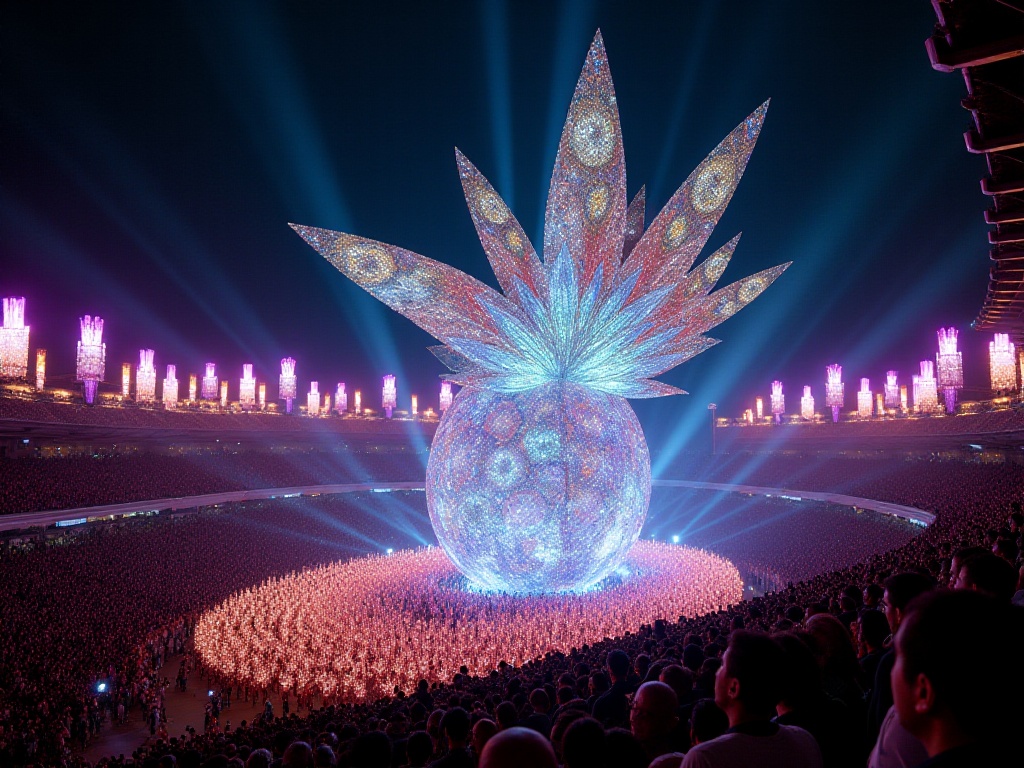
Participation Experience
If you want to truly experience the charm of the Day of the Dead, Oaxaca is absolutely the best choice. This city has preserved the most traditional and authentic Day of the Dead celebrations. Last year, I spent three unforgettable days there, personally experiencing various aspects of this unique festival.
In the early morning, the entire city begins to buzz with activity. Streets are filled with people purchasing offerings, and markets are full of golden marigolds and various ceremonial items. I watched how locals carefully selected each flower and meticulously chose each offering. This serious attitude deeply moved me.
During the day, I learned how to set up altars with local families. Watching them carefully arrange each item and listening to the stories behind each object gave me a deeper understanding of this festival. The altar is not just a display; it carries people's longing for the deceased and serves as a bridge connecting the living with the dead.
In the evening, various cultural activities begin in the city squares. There are traditional music performances, folk dance shows, and various art exhibitions. I particularly enjoyed watching people's makeup process, seeing ordinary people transform into skeletons, which was both interesting and magical.
The nighttime cemetery left a deep impression on me. Under candlelight, the cemetery didn't appear gloomy or frightening but was full of warmth and hope. People sat around their loved ones' graves, lighting candles, sharing food, and telling stories. That warm atmosphere made me understand that death itself isn't scary; what's scary is being forgotten.
Travel Advice
If you plan to participate in the Day of the Dead celebrations, you need to prepare thoroughly. First, accommodation is the most important consideration. Due to the large number of tourists during the festival, hotels are often fully booked half a year in advance. It's recommended to start booking accommodation at least 6 months ahead, especially if you want to stay in the city center or near main event locations.
Second, language preparation is also important. Although you might encounter English speakers in tourist areas, learning some basic Spanish is necessary if you want to better immerse yourself in the local culture. Simple daily phrases like "Hola" (Hello), "Gracias" (Thank you), "Adiós" (Goodbye), "Por favor" (Please) can help you communicate better and show locals your respect for their culture.
When participating in activities, it's important to respect local customs. Although the Day of the Dead atmosphere is joyful, it's essentially a festival commemorating the deceased. Maintain appropriate solemnity in places like cemeteries or churches. When taking photos, especially in cemeteries, it's best to get permission from locals first.
Regarding equipment, a camera is essential. During the Day of the Dead, there are wonderful scenes everywhere worth recording. However, note that many indoor venues may prohibit flash photography. Additionally, comfortable shoes are important as you'll likely do a lot of walking and participate in various activities.
Deep Reflection
After experiencing the Day of the Dead, one can't help but reflect on modern society's attitude toward death. In many cultures, death is a taboo topic, and people often choose to avoid it or face it with sadness. But Mexicans commemorate the deceased joyfully - does this attitude offer us new insights?
In modern society, we seem to increasingly distance ourselves from the topic of death. But death is an inevitable part of life, and avoiding it doesn't solve anything. The Mexican approach tells us we can face death with a more open and positive attitude. Through celebration and commemoration, we can not only express our longing for the deceased but also better understand the meaning of life.
The Day of the Dead also reminds us to cherish time with family. In this fast-paced society, we often neglect communication between family members. The Day of the Dead provides an opportunity for families to gather together, collectively remember departed loved ones, and strengthen connections with each other.
Final Thoughts
Every time I recall the Day of the Dead I spent in Mexico, those vivid images appear before my eyes: golden marigolds, colorful skull decorations, flickering candlelit altars, streets filled with laughter and joy. This festival made me understand that commemorating the deceased doesn't have to be done in sadness; joyful celebration can equally express our longing and respect for the departed.
The Day of the Dead teaches us that death is not the end but another form of existence. Through this unique celebration, Mexicans not only maintain connections with the deceased but also pass on precious cultural traditions. This attitude toward death might be worth considering and learning from for each of us.




